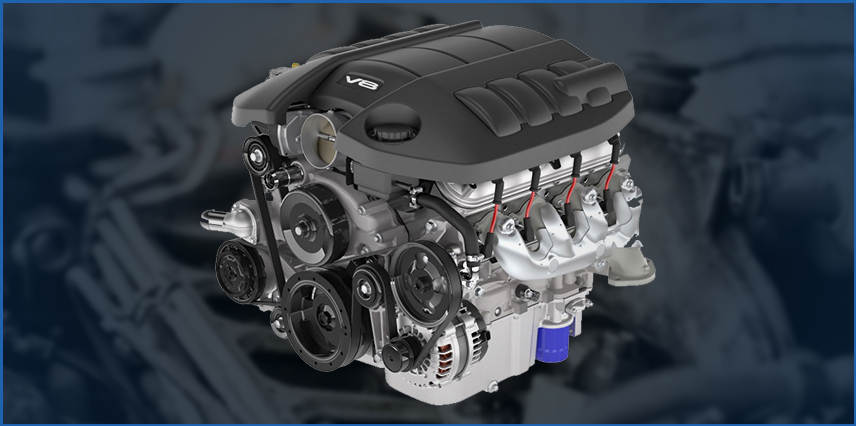V8 engine have eight cylinders and are the most demanded engines with high power. They are desired for their mighty roar and higher engine torque. Even with highly advanced and more powerful options in the market, most car enthusiasts choose V8-engine cars. The majority of stockcar manufacturers offer V8 as their standard engine. However, seeing V8 engines on nonluxury vehicles is not common.
Keep reading to learn more about V8 engines and why they are used in high-end vehicles.
V8 Engine History
In the 19th century, the V8 engine was invented for airplanes and ships. The first automobile manufacturer, Renault, used these engines in automobiles in 1904. Then later, in 1905, Rolls Royce launched their first ever street car with a V8 engine available for the first time. It was a 3.5-liter V engine and was a beast of that time.
One of the reasons why cars with V8 engines are a luxury is because they deliver powerful and heavy performances.
Structure of a V8 Engine
The V8 engine consists of eight cylinders divided into two halves.
The engine has two sets of four cylinders arranged in a V shape at a 90-degree angle. When the first cylinder on the left side moves upwards, the first cylinder on the right side is at the top dead center. As a result, a balanced primary force is created.
However, secondary forces are not balanced, so they require a friction neutralizer and engine mount to reduce vibration impact.
The functioning of a V 8 engine is pretty similar to any other four stroke internal combustion engine.
How Much is a V8 Engine?
V8 engines are ultimately large and powerful engines built for people who want more than just transportation from their car. When it comes to price, there is no fixed amount because there are so many types of engines and variations specific to each model. To know how much does a v8 engine cost, you will have to consider various factors, including model, brand, power output, and engine condition.
Brand New V8 Engine
Brand-new V8 engines can vary from $2,000 to over $10,000. The cost is highly based on the engine’s specifications and the vehicle for which it is designed.
For example, a new 5.0L V8 engine for a Ford Mustang GT can cost around $7,000, and a performance-oriented V 8 engine, such as a Chevrolet, can put a dent of $15,000 in your wallet.
Also, these prices are just for the engine and do not include the additional cost of modification, installation, or upgraded parts.
Used or Refurbished V8 Engine
The used or refurbished engines are more pocket-friendly, can cost as little as $ 5,000, and can go up to a few thousand dollars depending on condition, model, and mileage. However, there are risks involved with a second-hand purchase. Though you can save money on a second-hand purchase, there are chances of hidden issues arising that can lead to costly repair costs in the future.
Therefore, it is important to inspect the engine thoroughly with the assistance of a trusted mechanic before making a purchase. Also, it is preferable to buy from a reputable seller who offers a warranty.
Other Factors Affecting the Cost of V8 Engine
Other factors that affect the cost of a V8 engine include:
Fuel Type
Gasoline engines are cheaper than diesel engines. However, diesel engines have better torque and are more efficient. However, the price difference between these engines is not as significant as it was before.
Turbocharged Engine
Turbocharged engines are more costly than non-turbocharged engines. This is because they require additional components, including intercoolers. However, turbocharged engines have more power, making up for the additional price.
Engine Displacement
Motor size is also a factor that affects the cost. Larger motors are more expensive than small engines. This is because larger engines require more materials and have a high production cost.
So this is also a factor to consider when paying for a turbocharged engine.
Benefits of Best V8 Engines
Though V12, electric, and hybrid engines are advanced, the V8 engine has its own position. There are multiple reasons why even the latest engine cannot compete with classic engines.
Here are some of the primary benefits of driving a V8 car engine.
Compact Size
The two-cylinder bank configuration of the engine makes it compact in size. That is why it can save a lot of space and can fit into smaller engine blocks.
Manufacturing Cost
The overall manufacturing cost of the engine is reduced as two-cylinder heads mean fewer moving parts.
Maintenance
Best V8 engines require low maintenance costs and are easy to repair. The cylinder head, which is located at the top reduces the effort of reaching major components.
Intake Manifold
They allow an intake manifold that assures equal distribution of air-to-fuel ratio in all cylinders.
Balanced Primary Forces
A balanced primary force is created when two opposite pistons move alternatively.
Conclusion
In conclusion, this was the whole detail on the use and benefits of V8 engines along with their prices. The cost of a V8 engine depends on various factors. It is important to consider not only the original price of the engine but also the future cost along with the durability that that different options offer. Also, whether you are purchasing a new or used engine, do your research and consult with a professional to get the best advice.

